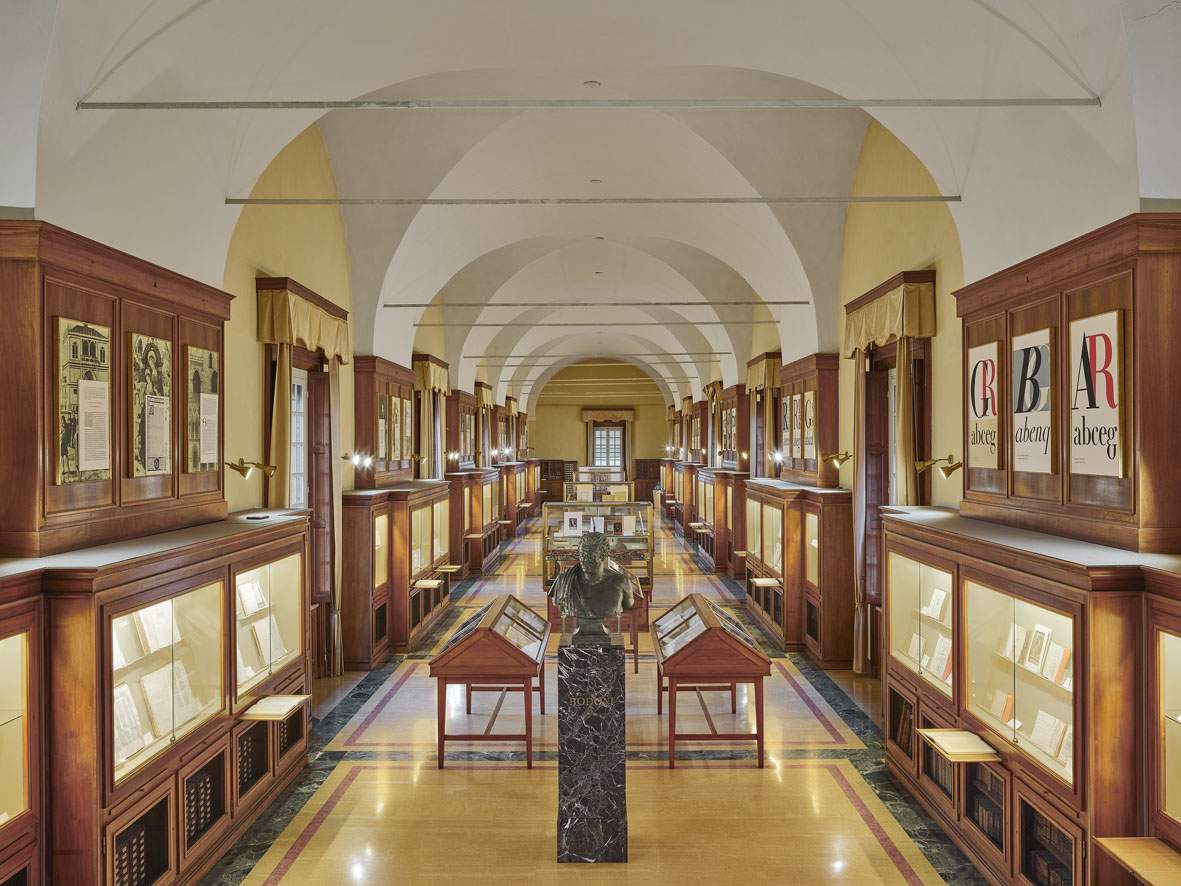In Parma, the new Museo Bodoniano is about to open in the Pilotta complex: the museum, the oldest in Italy and the world in terms of printing, dedicated to the great typographer Giambattista Bodoni (Saluzzo, 1740 - Parma, 1813), is about to present itself to the public totally renewed, with a double soul: on the one hand, the tale of Bodoni’s forge, the printing house, and the history of Bodoni, and on the other, the tale of Parma’s culture at a time when the city had the breath of a European capital.
The new museum has been allocated the rooms formerly used as the periodicals warehouse of the Palatina Library, on the first floor of the Pilotta, with entrance and exit from the porticoed street. The director of the Pilotta, Simone Verde, entrusted the concept of the new layout of the Bodonian Museum to its scientific director Andrea De Pasquale. “The Museo Bodoniano,” the latter explains, “is the oldest printing museum in the world, having been founded by Angela Pezzana in 1842 when, in order to make the masterpieces of Bodoni’s production visitable, as was the case when Bodoni was alive, a ’punches room,’ with a specific conservator, was set up in the Galleria dell’Incoronata of the Palatina.”
The new museum will have four sections. The first will be reserved for “Bodoni, Parma and Europe.” In the center will be a multimedia table with a map of the Duchy and its ties with European courts, the economic and social aspects of the period, with particular regard to the location of the paper mills, the places of Bodoni’s life and cultural journey (Saluzzo, Rome, Parma, Turin, Milan), and his relationship with neoclassicism. In this section the visitor will also have an overview of the typographic production of the time and Bodoni’s reference printers (e.g. Baskerville). He will also meet Bodoni, in his many portraits, and, with him, members of the court and figures associated with him. The inclusion of a view of Rome and classically-inspired paintings with ancient or old-fashioned ruins, busts or statues is also being hypothesized to recreate the neoclassical “feeling” that connoted the era.
The largest section is entitled “The Book Factory”: it will occupy the central part of the exhibition hall, divided into four large niches. In each niche, the various stages of Bodoni’s work are reconstructed, starting with the type foundry with its working tools (punches, matrices, casting forms and related characters, some still placed in the cabinets created to contain and manage them as best as possible). This is followed by the section on reproduction, with examples of letterpress manuscripts, the composite and the advantage. We then move on to the section “The Press,” with proofs on paper and parchment, copies on silk, and the press, a 1940s reconstruction, also put back into operation for educational purposes, which also has a subsection, “Illustration and Binding,” where there are also copperplates related to Bodonian editions. For this section, Director Verde has made a request to the Toschi Institute to be able to display the Royal Printing House’s intaglio machine. The subsection on bookbinding includes the display of the paper press also from the Toschi Institute and the display of some of Bodoni’s finest bindings. The processes of typesetting, printing and binding will be illustrated on the walls by plates from the Encyclopédie. Bodoni’s masterpieces, with special reference to those sent for the Universal Exhibition in Paris in 1811, as well as manuals, will also be displayed in the center of the section, in brass showcases formerly owned by the Museum. Some examples of Bodoni’s production will be browsable in touch-screen totems.
Finally, “The Myth of Bodoni”: a large bookshelf will display the collection of Bodonian volumes, with special emphasis on the Palatine collection still with original bindings, in order to document Bodonian bibliophilia. On the other wall, images of the Bodonian typefaces still in use today in their various versions and reworkings and examples of the use of the Bodonian typeface today will be projected on monitors, all in order to document the relevance of the Bodonian message. At the center will be a multimedia table with the history of Bodonian celebrations, dislocation of the world’s major Bodonian collections and their descriptions, and examples of print and typeface museums or places that still call to mind Bodoni and his typefaces today. Materials related to the anniversaries of 1913 and 1940 will be on display, alongside examples of editions by typographers who drew on the Bodonian lesson (Mardersteig, Tallone, Riva) and typeface samples from foundries and models of Bodonian alphabets proposed by contemporary graphic designers reinventing the tradition (Ricci, Vignelli).
Work on the structural and plant works of the new museum began last September and is being completed with the museographic layout. The overall intervention required an investment of about 760,000 euros, fully covered by the Ministry of Cultural Heritage and Activities and Tourism. Director Verde points out that “the Bodoni was difficult to access and, in the layout dating back to 1963, poorly communicative for a lay public, problems that the new Bodoni by Bodoni will finally make it possible to overcome.”
 |
| New Bodonian Museum opens in Parma: here's what the oldest printing museum looks like |
Warning: the translation into English of the original Italian article was created using automatic tools. We undertake to review all articles, but we do not guarantee the total absence of inaccuracies in the translation due to the program. You can find the original by clicking on the ITA button. If you find any mistake,please contact us.